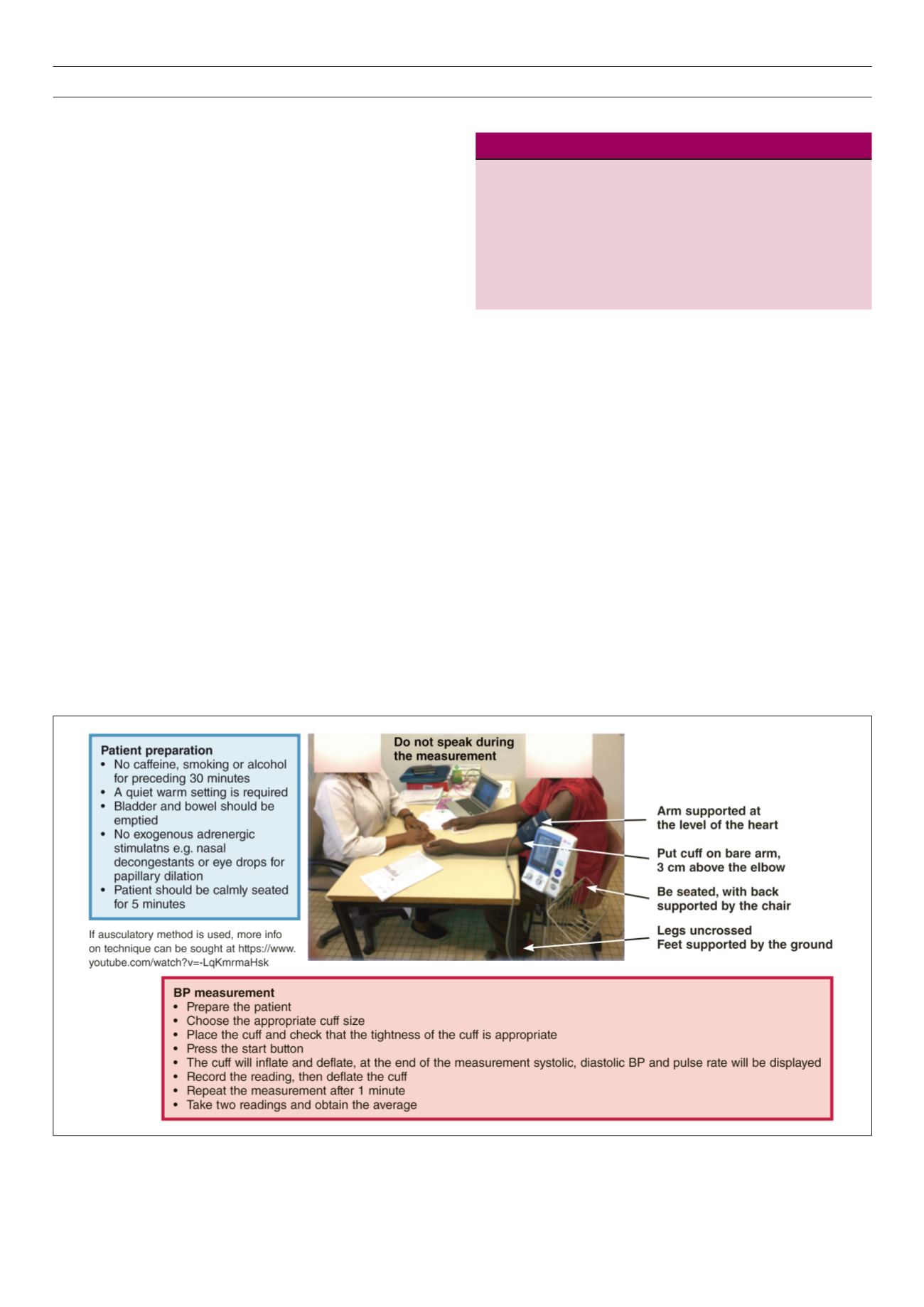

76
VOLUME 15 NUMBER 2 • NOVEMBER 2018
PASCAR ROADMAP
SA JOURNAL OF DIABETES & VASCULAR DISEASE
9. Support high-quality research to produce evidence that will
guide interventions.
10. Invest in population-level interventions for preventing
hypertension, such as reducing high levels of salt intake and
obesity, increasing fruit and vegetable intake and promoting
physical activity.
African ministries of health, in their leadership roles, are called
to adopt the 10-point action plan and customise it at a country
level using a multi-sectoral approach. PASCAR calls on NGOs, all
fraternal organisations, healthcare leaders and other members of
the international community to join in this ambitious endeavour
to support efforts by African ministries of health in reducing the
burden of hypertension in Africa. Effective advocacy towards policy
makers and politicians in national governments is particularly
encouraged.
Hypertension definitions
There is a graded relationship between blood pressure (BP) levels,
as low as 115/75 mmHg, and cardiovascular disease (CVD) risk.
1
However, hypertension is defined as the BP level above which
treatments have been shown to reduce clinical events in randomised
trials, which is accepted as ≥ 140 mmHg systolic and/or ≥ 90
mmHg diastolic BP. The classification of BP levels used for defining
hypertension is presented in Table 1.
Hypertension burden in Africa
Hypertension has progressively become a major threat to the well-
being of people in sub-Saharan Africa (SSA). During the past four
decades, the highest levels of BP worldwide have shifted from high-
income countries (HIC) to low- and middle-income countries (LMIC)
in South Asia and SSA.
2
The WHO estimates that the prevalence of
hypertension is highest in the African region, with about 46% of
adults aged 25 years and older being hypertensive.
3
This compares
to 35% in the Americas and other HIC and 40% elsewhere in the
world.
3
High hypertension rates, ranging from 19.3% in Eritrea to 39.6%
in the Seychelles, were reported for 20 African countries in WHO
STEPS(STEPwiseapproachtosurveillance)surveysconductedbetween
2003 and 2009.
4
In a systematic review, the pooled prevalence in over
110 414 participants aged ± 40 years in 33 surveys was 30% (95%
confidence interval: 27–34%).
5
In Africa, the number of people with
hypertension increased from 54.6 million in 1990 to 92.3 million in
2000, and 130.2 million in 2010. Under prevailing circumstances,
this could increase to 216.8 million by 2030.
6
Gap in the care versus opportunity to control
hypertension
The PASCAR task force recommends key steps for appropriate office
measurement (Fig. 1). BP-lowering strategies that have shown their
efficacy in HIC are likely to succeed in Africa. In Table 2, a synopsis
is provided of currently published treatment guidelines differing
regarding treatment thresholds.
Table 1.
Definitions of classes of raised blood pressure
Category
SBP (mmHg)
DBP (mmHg)
Optimal
< 120
< 80
Normal
120–129
80–84
High normal
130–139
or
85–89
Grade 1 hypertension (mild)
140–159
or
90–99
Grade 2 hypertension (moderate)
160–179
or
100–109
Grade 3 hypertension (severe)
≥ 180
or
≥ 110
Isolated systolic hypertension
≥ 140
and
< 90
SBP, systolic blood pressure; DBP, diastolic blood pressure
Fig. 1.
PASCAR recommendations for blood pressure measurement, thresholds and action required following appropriate office measurement.



















